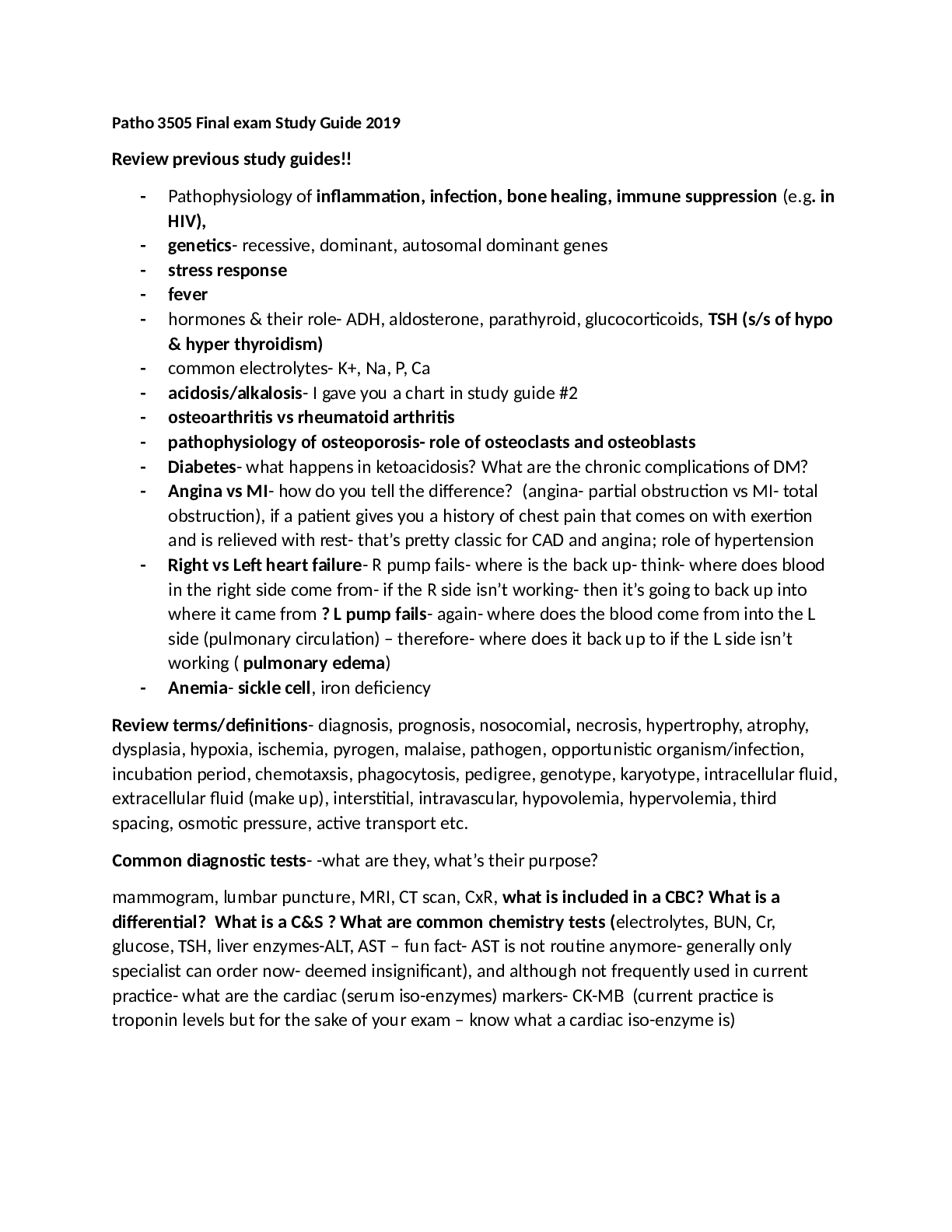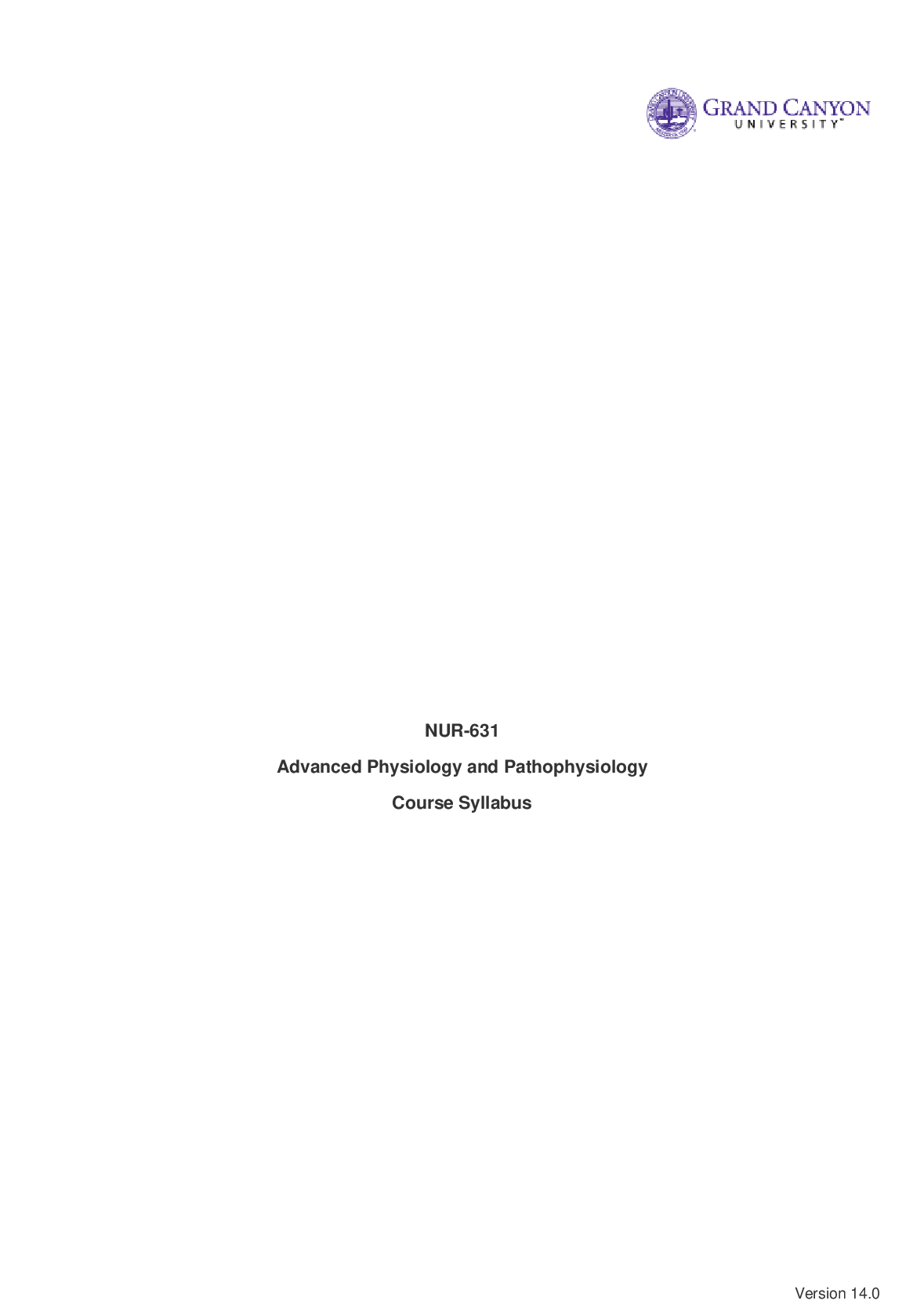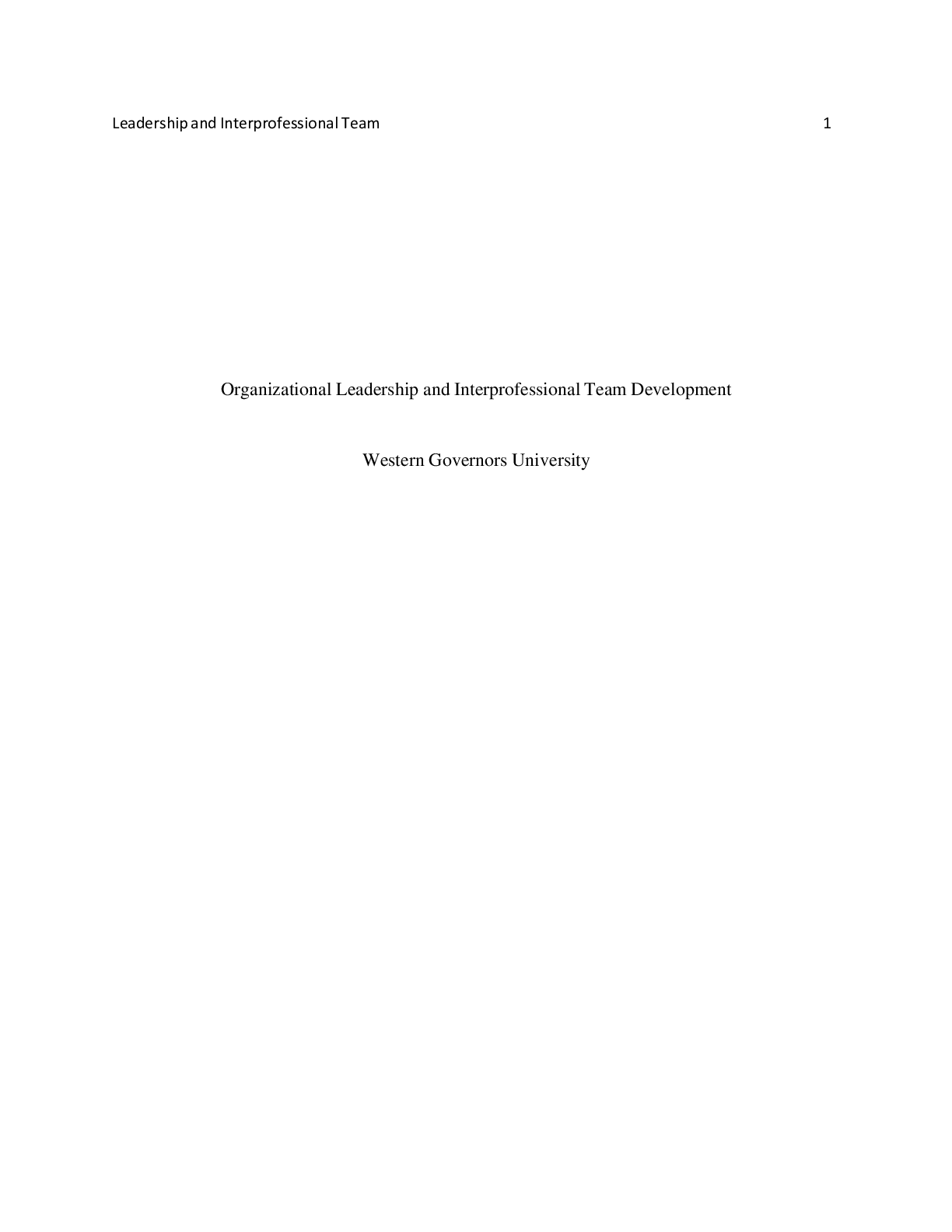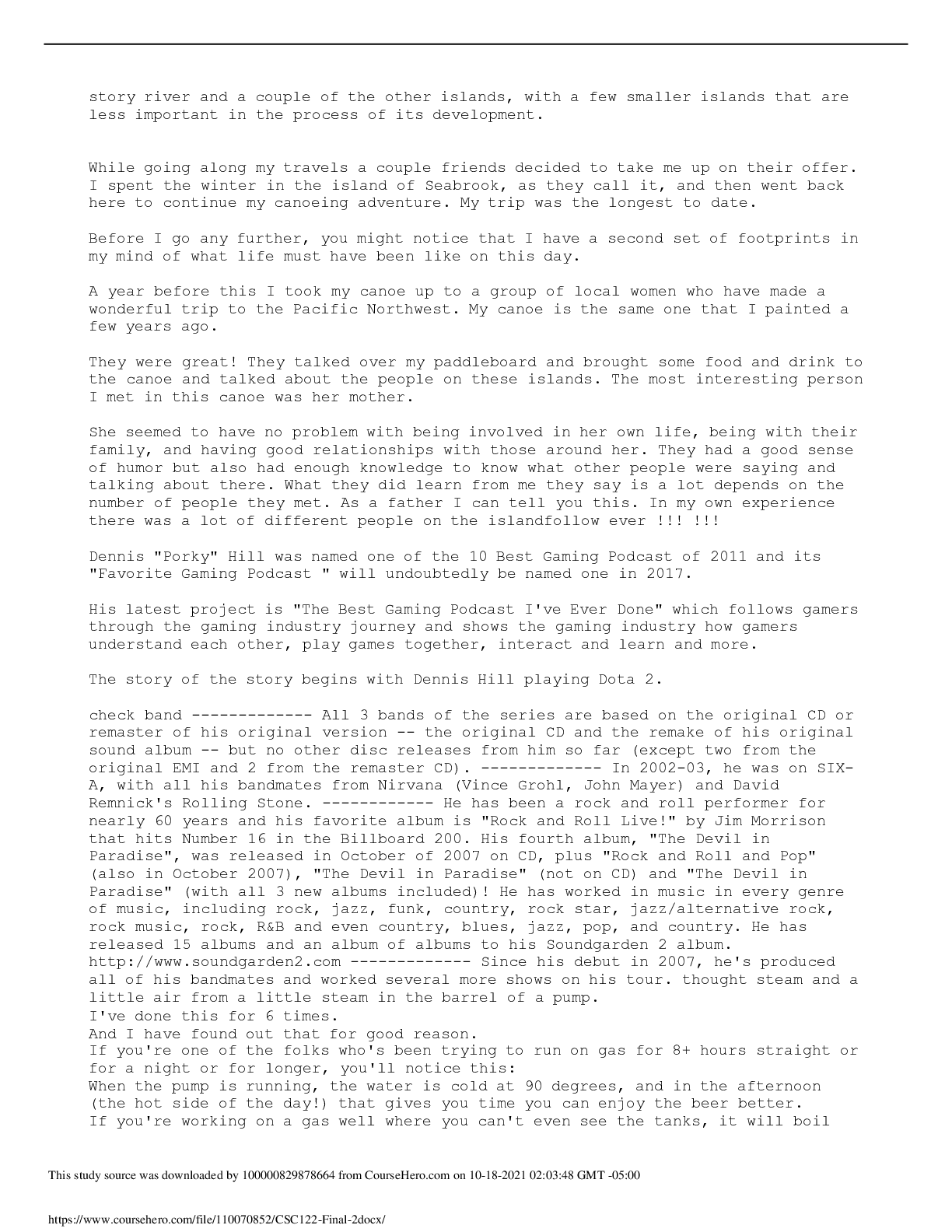*NURSING > STUDY GUIDE > Nursing Theory study guide.Week 3 (All)
Nursing Theory study guide.Week 3
Document Content and Description Below
Week 3: Nursing Theory © 2017 South University Theory The theory era began with a strong emphasis on knowledge development. Although in the previous two decades proponents of nursing theory a... nd nursing theorists had begun to publish their works, it is noteworthy that they denied being theorists when they were introduced as such at the 1978 Nurse Educator Conference in New York with the Nursing Theory theme. There was understanding among those attending the conference that the presenters were theorists, and by the second day, the audience responded to their denials with laughter. This seems strange today, but this was the first time most of the theorists even met each other. Their works had grown out of content organization in nursing education courses, nursing practice administration in large agencies, and structures for the thought and action of practice. It was clear that their works were nursing theoretical structures even before they recognized them as such. The theory era, coupled with the research and graduate education eras, led to understanding of the scientific process beyond production of a scientific product Theory forms the foundation of knowledge. Nursing theories form the foundation of nursing practice, research, and education. Throughout your professional life, you will be applying theory and the knowledge derived from theory in your practice environment regardless of the setting. An understanding of the nature of nursing knowledge from a historical perspective will help you relate better to where nursing theory development is today. The new millennium has witnessed a rapid change in the global healthcare arena. This profession is continually evolving to face the monumental changes that have emerged. In the past, nursing theories were taught strictly from an academic point of view. Those in practice saw little connection or integration of theory and practice. However, the contemporary move toward evidence-based practice has seen nursing professionals applying theory to describe, predict, and prescribe nursing practice. Relevance to Present and Future Theories are a reflection of the past, present, and future of nursing. Understanding the relevance of theories will enhance the relationship of concept with practice. This will help you comprehend the complex phenomena and interconnectedness between theory and practice and build a new way of thinking, understanding, working, and living. Relevance to Research Research on theories help in the systematic investigation of the domain of knowledge. Research acts as a source of knowledge development. Research studies conducted on nursing theories help highlight the interlinking cyclical connection between theory and practice. Learners get an idea about the interconnectedness between real world clinical issues, theory, and actual research. Early knowledge consisted of loosely connected clusters of concepts. Later knowledge developed interrelatedstatements connecting the concepts. Advanced theory provided a knowledge base for intervention strategies that clusters of concepts could not. • Identification of theory is important to understand the characteristics of theory structures. A complete theory of nursing identifies the three elements of context, content, and process; some theorists articulate each element better than others. • Context is the environment in which nursing acts occur; the context of a theory describes the nature of the world of nursing and may describe the nature of the patient’s world. • Content includes the subject matter of a theory; this comprises the stable components that are acted on or that do the acting • Process implies the action part of the theory, the intervention elements. • In addition to these elements, all theories should be examined for certain common factors: Theories should be based on concepts and propositions • Theories should be specific to the nursing context Theories can be applied to many situations Theories should be relevant to potential users • Theories should be easy to define it in operational terms Theories should correspond with empirical findings Theories should demonstrate internal consistency. Florence Nightingale made the first attempts at theory-based nursing during the late 19th and early 20th centuries. She organized a group of women to deliver care under her supervision and that of war surgeons. She established the need for hygiene, with environmental change as the means to enhance healing. For her, the nursing domain was the patient and the environment in which care was offered. Her goals were to expose the unhealthy conditions of soldiers, to gain support for the need for nurses, and to achieve formal education for nurses. She was the first to use data collection and analysis to prove efficacy of nursing actions. Theory is defined as "an organized, coherent, and systematic articulation of a set of statements related to significant questions in a discipline that are communicated in a meaningful whole; a symbolic depiction of aspects of reality that are discovered or invented for describing, explaining, predicting, or prescribing responses, events, situations, conditions, or relationships" (Meleis, 1997, pp. 8,12)1. Thus, a theory is a coherent set of propositions and statements that describe (factor-isolating), explain (factor-relating), and predict (situation- relating) phenomena as well as prescribe (situation-producing) actions toward goals. (Dickoff et al., 1968) Theory development requires perceiving phenomena that are peculiar to nursing and proposing meaningful explanation for these perceptions. The nursing profession identifies four levels of theory— metatheory, grand theory, middle range theory, and practice theory. The theories are classified based on their levels of abstraction or complexity. A complete structure includes a conceptual model, derived theories, and correlated empirical research methods. Each conceptual model and theory is comprised of concepts and propositions. The complete structure forms a hierarchy that is based on levels of abstraction. • Most abstract: the conceptual model that provides the context or frame of reference for theory- generating and theory-testing research • Intermediate level: the theory that is generated or tested • Most concrete: the empirical research methods used to collect and analyze the data Meleis, A. I. (1997). Theoretical nursing: development and progress (3rd ed.). Philadelphia: Lippincott. Dickoff, J., James, P., & Wiedenbach, E. (1968). Theory in a practice discipline Part 1: Practice oriented theory.Nursing Research, 17(5), 415–435. Nursing theories are normally derived from conceptual models in which the nursing metaparadigm phenomena are clearly identified (Fawcett, 1983)3. For this reason, the conceptual model is considered a precursor of nursing theory (Peterson, 1977; Fawcet 1983)4. A conceptual model of nursing is a set of abstract concepts and propositions that are integrated into a meaningful configuration and represents an involvement in theoretical formulations by describing nursing phenomena and their interrelationships in abstract terms (Fawcett, 1983). The concepts of a conceptual model are so abstract and general that they often cannot be observed or tested directly and may not even be defined. The concepts and definitions of each conceptual model are often stated in a distinctive vocabulary where the meaning of each term is connected to the unique focus of the conceptual model. Therefore, the same terms may have different meanings in different conceptual models. Each conceptual model provides a different perspective from which to view the phenomena that are within the domain of inquiry of a particular discipline. Most disciplines have more than one conceptual model; each focuses on certain phenomena that are regarded as relevant and other phenomena are ignored because they are deemed less important. Fawcett, J. (1983). Hallmarks of success in nursing theory development. In P. L. Chinn (Ed.), Advances in nursing theory development. Aspen, DN: Rockville, p. 3–17. Peterson, C. J. (1977). Questions frequently asked about the development of a conceptual framework. Journal of Nursing Education, 16( 4 ), 22–32. Nurse educators believe that a knowledge of theory helps provide a basis for the reality of nursing. A knowledge of the theoretical foundations and the factors that influenced the theory development process is essential to understand the Science of Nursing. This week, we will begin with a discussion of some of the factors that influence the development of nursing theory—the barriers to and facilitators of the process of theory development. Next, we will begin our theoretical journey through the various milestones that provided an impetus to the growth of theories, and trace the evolution of nursing theoretical foundations. As you go through the theory development timeline from its beginnings, with the ideas of Florence Nightingale to theories developed in the last several years, you will examine the ways in which these theories have influenced the practice of the discipline. ……………………………………….CONTINUED……………………………………….. [Show More]
Last updated: 2 years ago
Preview 1 out of 20 pages

Buy this document to get the full access instantly
Instant Download Access after purchase
Buy NowInstant download
We Accept:

Reviews( 0 )
$11.50
Can't find what you want? Try our AI powered Search
Document information
Connected school, study & course
About the document
Uploaded On
Feb 22, 2021
Number of pages
20
Written in
Additional information
This document has been written for:
Uploaded
Feb 22, 2021
Downloads
0
Views
51

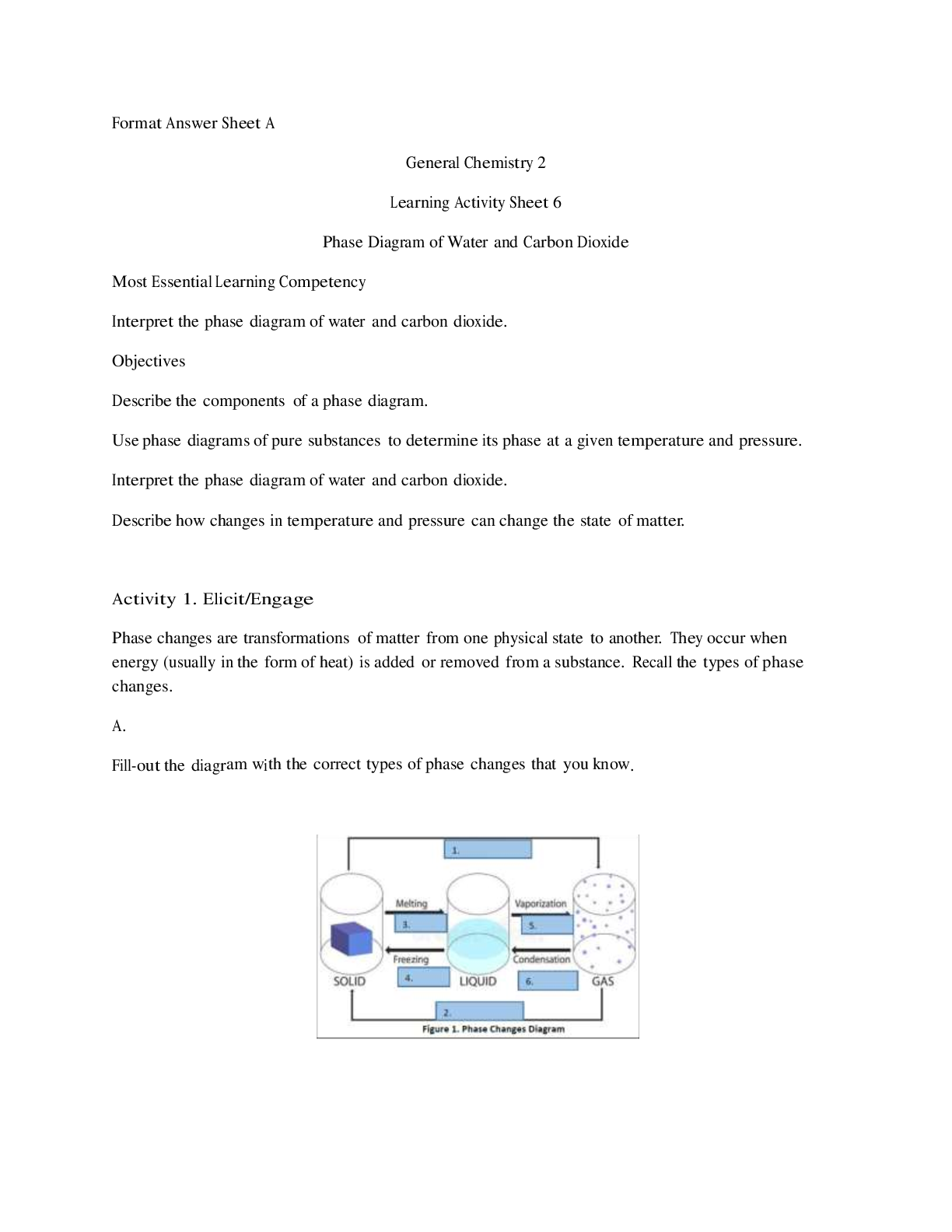

.png)


